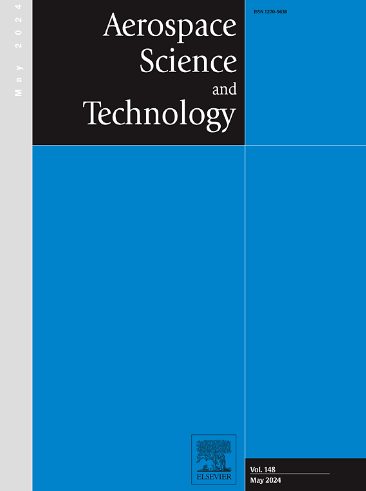Distributed two-channel dynamic event-triggered adaptive finite-time fault-tolerant containment control for multi-leader UAV formations
IF 5
1区 工程技术
Q1 ENGINEERING, AEROSPACE
引用次数: 0
Abstract
This paper addresses the distributed adaptive finite-time containment control problem in multi-leader UAV formations with actuator failures, limited communication, and external disturbances. A two-channel dynamic event-triggered strategy based on adaptive and sliding mode control is proposed as a containment control scheme, which solves the contradiction between the need to include containment error in the continuous term of the sliding mode surface in the adaptive law and the discontinuity of the communication between neighboring subsystems (follower UAVs) by constructing intermediate variables. Unlike the traditional event triggering condition that can only be applied to asymptotically convergent systems, the dynamic triggering condition designed in this paper, based on auxiliary variables, hyperbolic tangent function, and adaptive techniques, realizes finite-time convergence during the adjustment of the system and sets a more reasonable lower limit for the triggering thresholds, thus further reducing the communication frequency and ensuring the finite-time convergence of the system. The stability of the closed-loop system can be proved by the Lyapunov theorem. Zeno behavior can be avoided. The simulation results verify the effectiveness of the developed control algorithm.
多领航无人机编队的分布式双通道动态事件触发自适应有限时间容错遏制控制
本文探讨了多领航无人机编队中的分布式自适应有限时间遏制控制问题,该编队具有致动器故障、通信受限和外部干扰等问题。本文提出了一种基于自适应控制和滑模控制的双通道动态事件触发策略作为遏制控制方案,通过构建中间变量,解决了自适应法则中滑模面连续项包含遏制误差的必要性与相邻子系统(跟随者无人机)之间通信不连续性之间的矛盾。与传统的事件触发条件只能适用于渐近收敛系统不同,本文设计的动态触发条件基于辅助变量、双曲正切函数和自适应技术,在系统调整过程中实现了有限时间收敛,并为触发阈值设定了更合理的下限,从而进一步降低了通信频率,保证了系统的有限时间收敛性。闭环系统的稳定性可由李雅普诺夫定理证明。可以避免 Zeno 行为。仿真结果验证了所开发控制算法的有效性。
本文章由计算机程序翻译,如有差异,请以英文原文为准。
求助全文
约1分钟内获得全文
求助全文
来源期刊

Aerospace Science and Technology
工程技术-工程:宇航
CiteScore
10.30
自引率
28.60%
发文量
654
审稿时长
54 days
期刊介绍:
Aerospace Science and Technology publishes articles of outstanding scientific quality. Each article is reviewed by two referees. The journal welcomes papers from a wide range of countries. This journal publishes original papers, review articles and short communications related to all fields of aerospace research, fundamental and applied, potential applications of which are clearly related to:
• The design and the manufacture of aircraft, helicopters, missiles, launchers and satellites
• The control of their environment
• The study of various systems they are involved in, as supports or as targets.
Authors are invited to submit papers on new advances in the following topics to aerospace applications:
• Fluid dynamics
• Energetics and propulsion
• Materials and structures
• Flight mechanics
• Navigation, guidance and control
• Acoustics
• Optics
• Electromagnetism and radar
• Signal and image processing
• Information processing
• Data fusion
• Decision aid
• Human behaviour
• Robotics and intelligent systems
• Complex system engineering.
Etc.
 求助内容:
求助内容: 应助结果提醒方式:
应助结果提醒方式:


